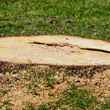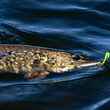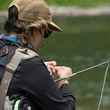The International Commission for the Conservation of Atlantic Tunas (ICCAT) met this past week in Turkey to negotiate on new protection measures affecting bluefin tuna, swordfish and several species of shark. The front-and-center topic of the meeting was whether or not to implement a digital tracking system for reporting catches of bluefin tuna. Proponents have argued that the current paper tracking system is inaccurate and prone to abuse. A study by the Pew Environment Group indicated that, last year, the actual amount of Mediterranean bluefin tuna meat that entered the market was over 140% more than was declared. Ultimately, the 48 member state commission agreed, voting to implement the requirement for an electronic catch tracking system to replace paper tracking methods.
The commission also voted to decrease the minimum length of fishing vessels that must be reported to the ICCAT, from 20 feet to 12 feet. Advocates of this action are describing this as an important step, as recent evidence has shown that a high number of smaller vessels have been fishing illegally for both bluefin tuna and swordfish.






























